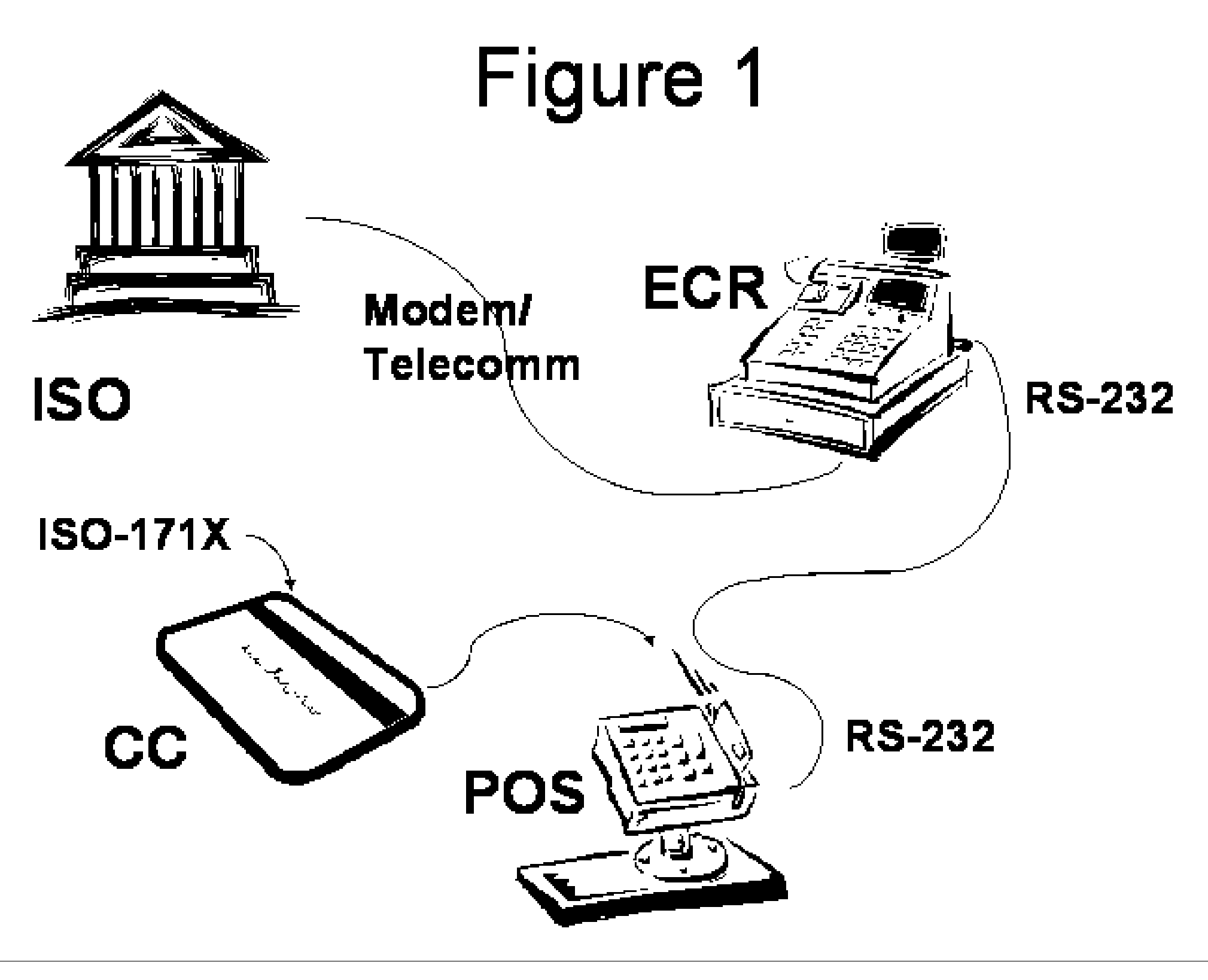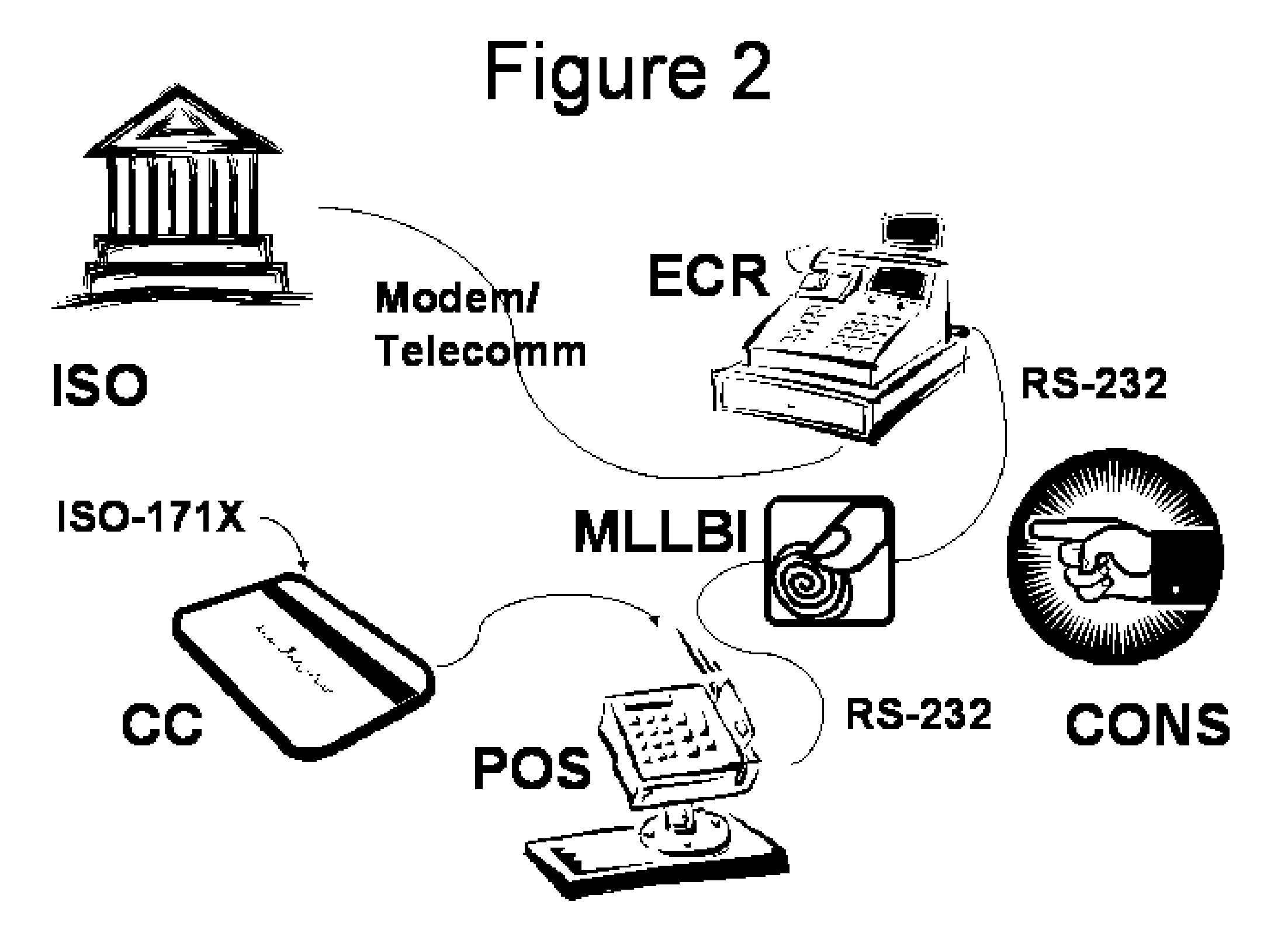Mid-Level Local Biometric Identification Credit Card Security System
a biometric identification and credit card technology, applied in the field of biometric security systems, can solve the problems of insufficient security, insufficient cost-effectiveness, and inability to effectively prevent the widespread fraudulent use of credit cards and other magnetic strip cards, and achieve the effects of reducing storage space, reducing initial hardware costs, and reducing costs
- Summary
- Abstract
- Description
- Claims
- Application Information
AI Technical Summary
Benefits of technology
Problems solved by technology
Method used
Image
Examples
Embodiment Construction
[0032] In FIG. 1, there is shown a diagram of a current credit card transaction authorization system. This system is composed of a credit card (CC), which is a plastic card bearing a magnetic stripe which is encoded with biometric and account information. The industry standard card type is described in the ISO-171X standards family. The magnetic stripe card is to be run through the reading device at the point of sale (POS), POS reads the data from the card in accord with said standards family. Said read data is encoded by the magnetic stripe card reader and communicated across an RS-232 datalink, USB datalink or similar standard datalink to the Electronic Cash Register (ECR) device. The ECR communicates by dial-up modem or some other standard telecommunications medium with the acquiring bank or independent sales organization (ISO) to transmit and receive data concerning the credit card transaction.
[0033]FIG. 2 modifies this architecture by inserting in series an MLLBI between the P...
PUM
 Login to View More
Login to View More Abstract
Description
Claims
Application Information
 Login to View More
Login to View More - R&D
- Intellectual Property
- Life Sciences
- Materials
- Tech Scout
- Unparalleled Data Quality
- Higher Quality Content
- 60% Fewer Hallucinations
Browse by: Latest US Patents, China's latest patents, Technical Efficacy Thesaurus, Application Domain, Technology Topic, Popular Technical Reports.
© 2025 PatSnap. All rights reserved.Legal|Privacy policy|Modern Slavery Act Transparency Statement|Sitemap|About US| Contact US: help@patsnap.com



